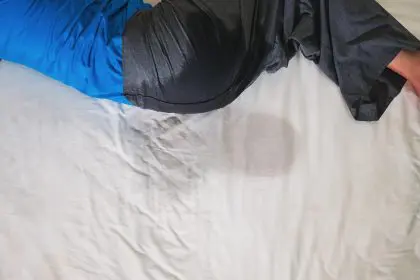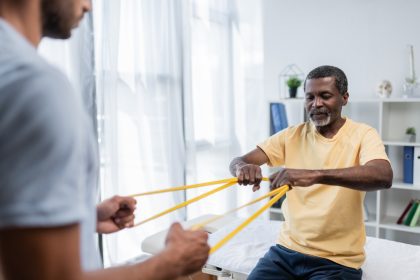When parents notice their child walking with feet pointing outward like a duck, many wonder if this requires medical attention or will resolve naturally. This walking pattern, medically known as out-toeing, affects thousands of children and some adults across America. While often temporary during childhood development, understanding the causes and available treatments can help families make informed decisions about their loved ones’ mobility and comfort.
What exactly causes that duck-like walk
Duck-footedness occurs when the feet naturally point outward rather than straight ahead during walking. This outward rotation happens because of twisting in the leg bones, creating a distinctive gait that resembles a duck’s waddle in children or a shuffling motion in adults. Despite its unusual appearance, most people with out-toeing experience no pain or mobility limitations.
The condition stems from various anatomical factors that can occur during development. In many cases, the rotation happens in the leg bones themselves rather than in the feet. When examining children with duck-footedness, medical professionals look at the entire leg structure from hip to toe to determine exactly where the outward turning originates.
For most children, this walking pattern represents a normal developmental phase rather than a medical concern. As their skeletal and muscular systems mature, many naturally transition to a straighter gait without any intervention. However, when the condition persists or causes discomfort, further evaluation becomes necessary.
Four main causes lead to outward-pointing feet
The human body’s alignment depends on proper positioning of multiple bones and joints working together. Duck-footedness can originate from several different anatomical sources:
- External tibial torsion occurs when the tibia (the larger shin bone) twists outward relative to the femur (thigh bone). This condition most commonly affects children between ages 4 and 7, often appearing as they grow rapidly during these years. The twist in the tibia causes the feet to point outward during standing and walking.
- Femoral retroversion develops when the femur itself rolls outward at the hip joint. This condition appears frequently in newborns and young infants, likely due to positioning in the womb during the final trimester of pregnancy. For most children, femoral retroversion naturally resolves during the first year of independent walking.
- Flat feet contribute to duck-footedness in nearly 45% of preschool-aged children. Without a proper arch, the foot tends to roll inward (pronate), causing the toes to point outward as a compensatory mechanism. This combination of flat feet and out-toeing often improves as the child’s foot arches develop.
- Hip joint positioning affects overall leg alignment from the top down. When the hip socket faces more outward than forward, the entire leg rotates externally. This variation sometimes runs in families and may persist into adulthood if significant enough.
For children experiencing duck-footedness, these causes often overlap or occur in combination. A comprehensive medical assessment helps determine which factors contribute most significantly to an individual’s walking pattern.
Risk factors that increase likelihood of out-toeing
Certain health conditions and backgrounds make some children and adults more likely to develop or maintain a duck-footed walking pattern:
Family history plays a significant role in determining leg alignment and walking patterns. Children whose parents or siblings have out-toeing face higher chances of developing similar gait characteristics, suggesting genetic factors influence bone growth and positioning.
Previous hip injuries or developmental hip conditions can alter the natural alignment of the leg. Even after the initial injury heals, the body sometimes maintains compensatory walking patterns that include out-toeing.
Neurological conditions significantly impact walking mechanics. Approximately one in four children diagnosed with cerebral palsy exhibits duck-footedness due to muscle tone abnormalities and motor control challenges. Other conditions like multiple sclerosis can similarly affect gait patterns in adults.
A sedentary lifestyle contributes to muscle imbalances that fail to properly support natural alignment. Modern lifestyles with extended sitting periods particularly affect hip positioning and rotation, sometimes leading to out-toeing in both children and adults.
Understanding these risk factors helps parents and healthcare providers monitor children who might benefit from early intervention or preventive measures.
Recognizing when medical evaluation becomes necessary
While most cases of childhood duck-footedness resolve naturally, certain signs warrant professional medical assessment:
Asymmetrical walking patterns where one foot points outward significantly more than the other may indicate underlying structural differences requiring attention. This asymmetry sometimes points to hip or leg development issues that benefit from early intervention.
Pain accompanying the duck-footed gait signals that the body experiences stress from misalignment. Children rarely complain about leg pain without cause, making this symptom particularly important to address promptly.
Tripping or coordination problems beyond typical childhood clumsiness suggest that the out-toeing interferes with normal movement. Children with significant duck-footedness sometimes struggle with running, jumping, or navigating uneven terrain.
Progressive worsening rather than gradual improvement raises concerns about underlying conditions. While mild duck-footedness often improves with age, increasing severity over time indicates potential problems with bone growth or muscle development.
Parents noticing these warning signs should consult their pediatrician for appropriate evaluation and potential referral to specialists like pediatric orthopedists or physical therapists.
The diagnostic process examines the entire leg
When evaluating duck-footedness, healthcare providers conduct comprehensive assessments that examine multiple aspects of movement and structure:
The physical examination begins with observing the patient’s natural standing position and walking pattern. Medical professionals note the degree of outward foot rotation and whether it changes during different activities like standing, walking, and running.
Range of motion testing helps identify tight or restricted muscles that might contribute to abnormal alignment. The examiner gently moves the hips, knees, and ankles through their full range to detect limitations or discomfort.
Angular measurements provide objective data about leg positioning. Using specialized tools, the provider measures the angle of the feet relative to the legs while the patient lies down, eliminating the influence of balance and weight-bearing.
Gait analysis involves watching the patient walk naturally, often videotaping the movement for detailed review. This analysis reveals the timing and coordination of leg movements, highlighting any waddling motion characteristic of duck-footedness.
Running assessment on a treadmill shows how the condition affects more dynamic movement. Many alignment issues become more pronounced during running, making this evaluation particularly useful for athletic children or those involved in sports.
For complex cases, imaging studies like X-rays or MRIs provide detailed views of bone structure and alignment. These tests help rule out rare but serious underlying conditions that might require specific treatment approaches.
This thorough diagnostic process ensures that treatment recommendations address the specific causes of each individual’s duck-footedness.
Treatment options range from observation to surgery
Managing duck-footedness depends entirely on its severity, cause, and impact on daily functioning. Most healthcare providers recommend starting with the least invasive approaches:
- Watchful waiting remains the most common approach for children under age 8. Since many children naturally outgrow duck-footedness as they develop, physicians often recommend regular monitoring rather than immediate intervention. During this observation period, parents track changes in walking patterns and report any new concerns.
- Physical therapy provides targeted exercises to address muscle imbalances contributing to out-toeing. Therapists design specific routines to strengthen hip rotators, improve core stability, and enhance overall lower body alignment. These exercises gradually retrain walking patterns without requiring invasive treatments.
- Orthotics support proper foot positioning when flat feet contribute to duck-footedness. Custom-made or prefabricated shoe inserts help maintain the foot’s arch and control excessive pronation that leads to outward foot rotation. Pediatric podiatrists specialize in determining whether orthotics might benefit specific children.
- Surgery represents the final option for severe, persistent cases that cause pain or significant functional limitations. Reserved primarily for children over 10 whose growth plates have sufficiently developed, surgical procedures like osteotomy reposition the femur to improve leg alignment. These interventions require substantial recovery time but can permanently resolve structural causes of duck-footedness.
For most families, conservative approaches produce satisfactory results without resorting to surgical intervention. Patience combined with appropriate exercises often allows children’s natural development to correct minor alignment issues.
Long-term outlook for children with out-toeing
Parents concerned about duck-footedness can take comfort in knowing that the condition rarely causes lasting problems:
Most children naturally develop straighter walking patterns by age 8 as their bones and muscles mature. This improvement happens gradually without specific treatment in approximately 80% of cases.
Athletic performance typically remains unaffected by mild to moderate out-toeing. Many professional athletes exhibit slight variations in foot positioning without experiencing disadvantages in their chosen sports.
Preventive care focusing on overall physical activity and proper footwear supports healthy development regardless of initial walking patterns. Regular exercise promoting strength and flexibility benefits all children, including those with duck-footedness.
Even when the condition persists into adulthood, most individuals adapt completely and experience no mobility limitations or discomfort. The human body shows remarkable adaptability to various alignment patterns.
For families currently navigating childhood duck-footedness, maintaining open communication with healthcare providers ensures appropriate monitoring without unnecessary intervention. This balanced approach preserves normal childhood activities while addressing any significant concerns.
When adult duck-footedness requires attention
While childhood out-toeing often resolves naturally, adult-onset duck-footedness sometimes signals underlying health changes requiring medical evaluation:
New walking pattern changes in adults should prompt medical consultation, especially when accompanied by pain or instability. Such changes occasionally indicate developing arthritis, muscle weakness, or neurological conditions.
Exercise modifications help adults with persistent out-toeing maintain joint health and prevent excessive wear. Physical therapists can recommend specific techniques for activities like running to minimize stress on affected joints.
Workplace adaptations including appropriate footwear and ergonomic adjustments support adults whose occupations require prolonged standing or walking. These modifications help prevent fatigue and discomfort associated with duck-footedness.
Adults experiencing pain or mobility limitations from long-standing out-toeing benefit from comprehensive evaluation by orthopedic specialists or sports medicine physicians familiar with gait abnormalities. These experts can determine whether newer treatment approaches might offer benefits even for longstanding conditions.
With appropriate awareness and occasional adjustments, most adults with duck-footedness lead active, comfortable lives without significant limitations.
Supporting your child through treatment and development
Parents play a crucial role in helping children with duck-footedness develop healthy movement patterns:
Encourage regular physical activity that naturally strengthens leg muscles and improves coordination. Activities like swimming, cycling, and playground play promote overall development while subtly improving alignment.
Avoid highlighting the walking difference to prevent self-consciousness. Children remain highly sensitive to perceived differences, making positive reinforcement of activities rather than walking style particularly important.
Follow through consistently with any recommended exercises or stretches from healthcare providers. Even simple home routines performed regularly make significant differences in outcomes over time.
Choose appropriate footwear with good arch support and proper fit. While special corrective shoes rarely prove necessary, well-constructed everyday footwear provides the foundation for healthy foot development.
By combining professional guidance with supportive parenting, families help children with duck-footedness develop confidence in their physical abilities regardless of minor gait differences.















